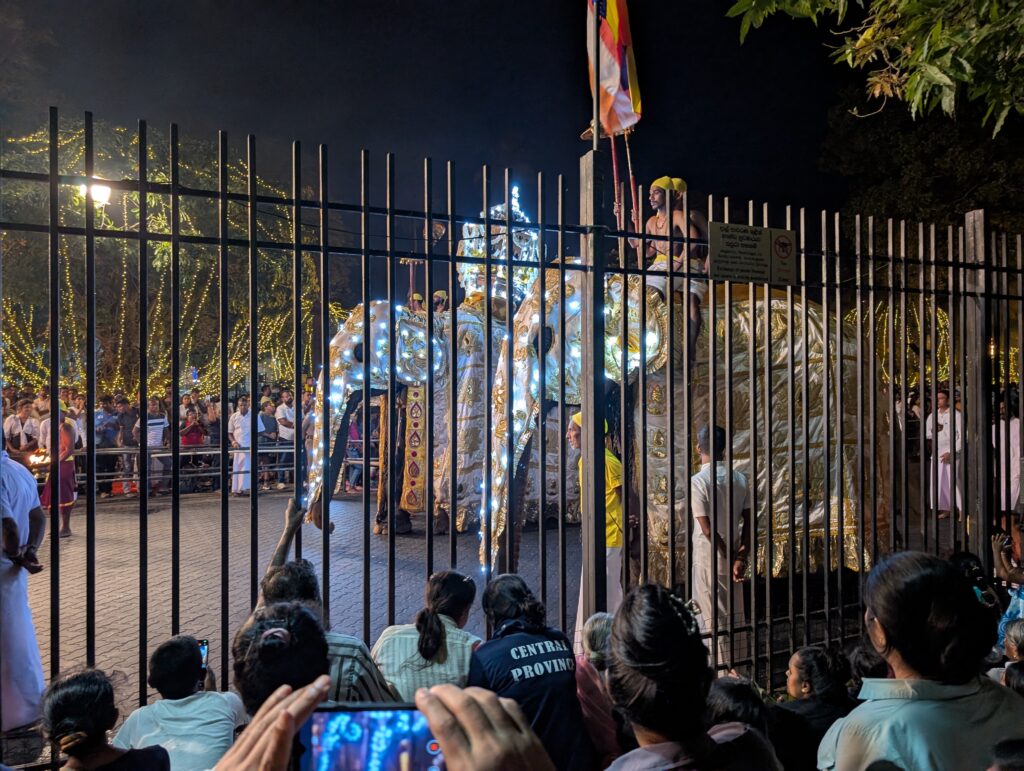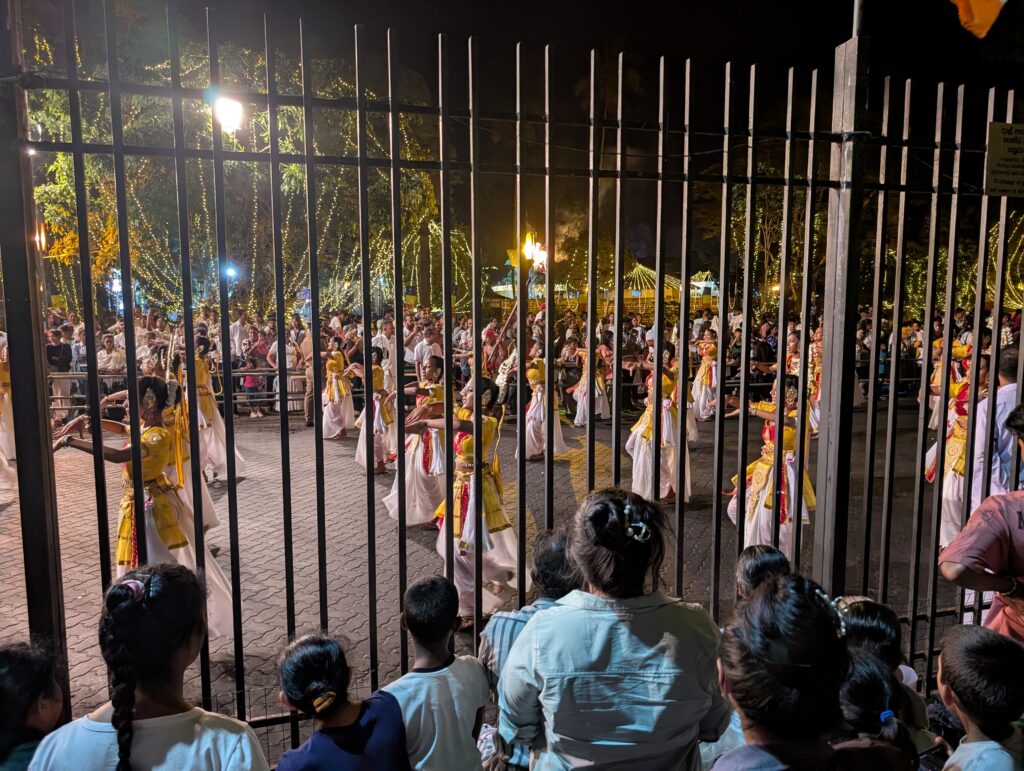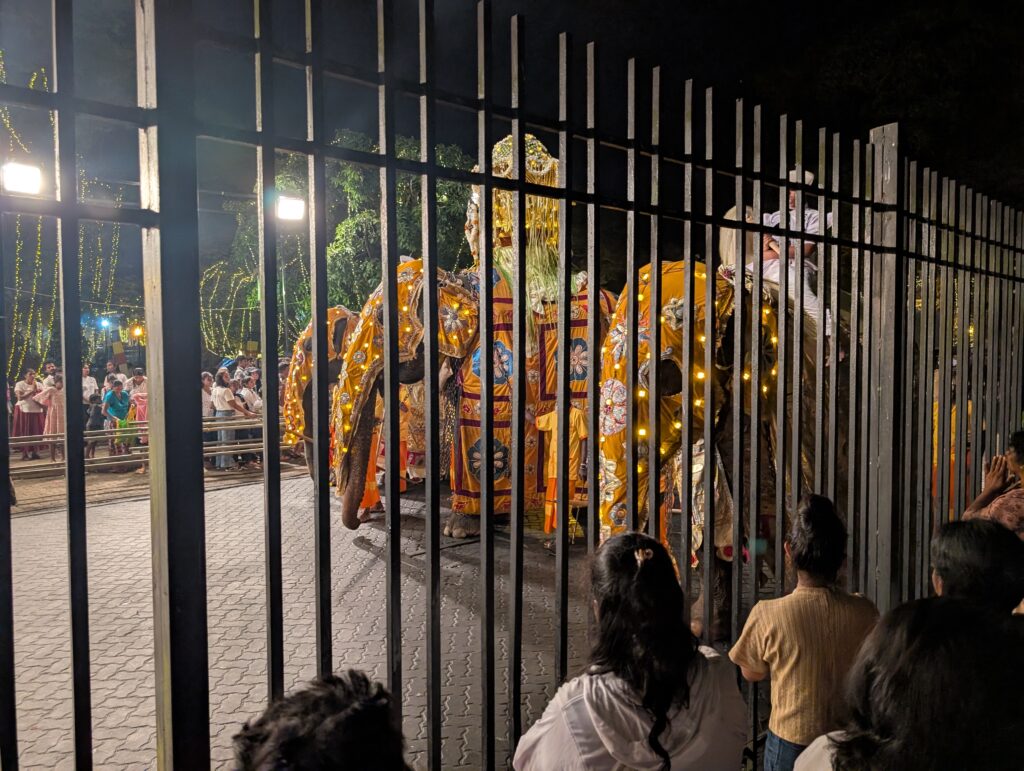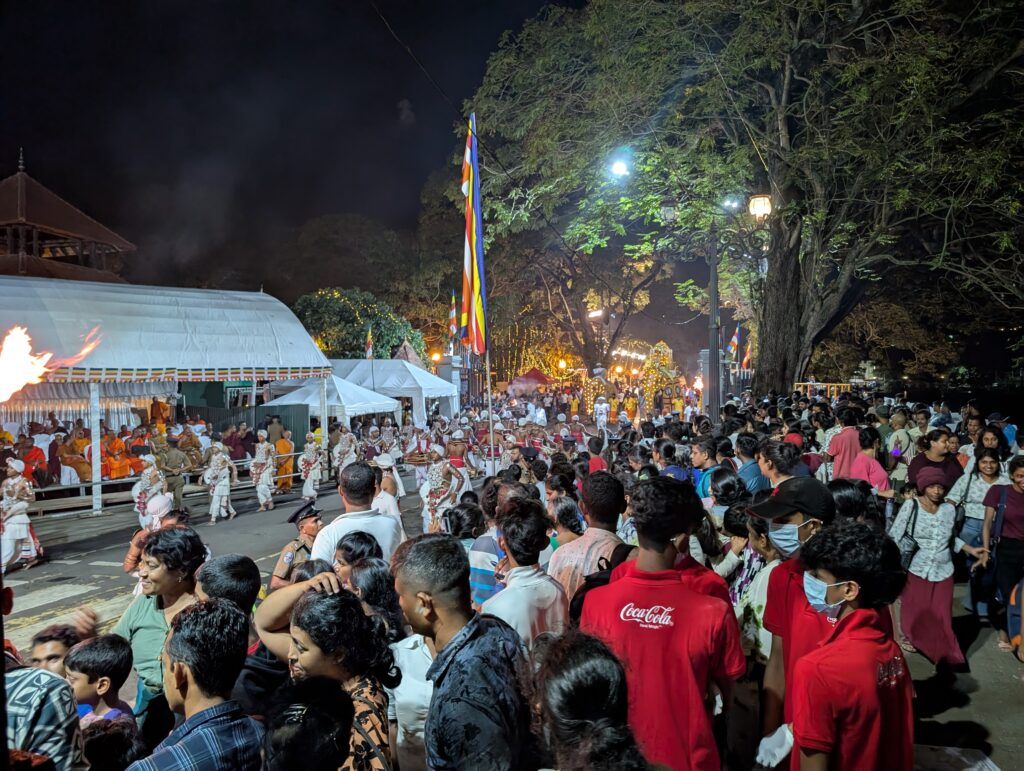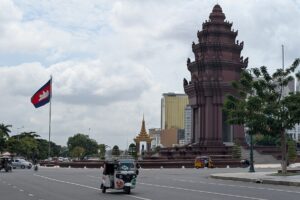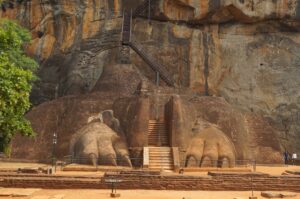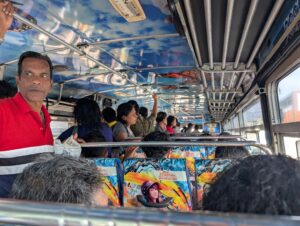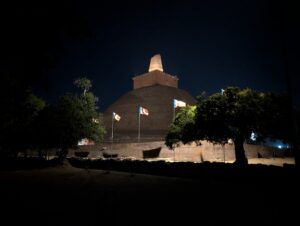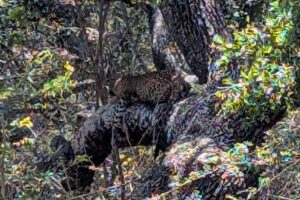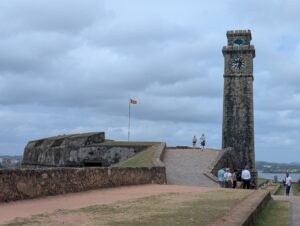Kandy
Festival of the Tooth
Driving in Sri Lanka was an adventure in the best of circumstances. The road from Dambulla to Kandy was especially slow and winding. The Festival of the Tooth added to the congestion as pilgrims and tourists come in by the thousands to participate in or observe this big event. I snaked into town and wound my way through a maze of clogged, two lane streets to my hostel.
My hostel in Kandy was clean and modern looking. The air conditioning and wifi were strong. I had arrived at about midday, and was not yet able to check in. I was able to relax in the common areas, however, and to store my baggage. I had somehow misplaced my passport wallet. I figured I left it at the gas station. It seemed like too much of an adventure to attempt to drive back to the gas station, so I walked. It was about a mile and a half over a hill along the serpentine roads. When I arrived, however, there was no sign of a passport wallet. I walked back feeling as nervous as I had at any time during the trip.
I had searched the car pretty thoroughly before setting off on my hike. As it turns out, I had missed a place under the seat. In the craziness of Sri Lankan driving, my passport wallet had slid underneath the seat! When I paid for my gas, I had gotten it out of its normal place to withdraw bank notes I had stashed there. I keep money spread around in a few different places in case something happens to some of it. I laid the wallet back on the seat of the car, and in the course of jostling through stop and go traffic, it had made its way under the seat to a dark corner, and I had somehow missed it. Finding it was a great relief.
I cleaned up after my walk to the gas station, and then set out to explore the town and find a place to watch the procession associated with the Festival of the Tooth. Kandy is home to the most venerated Buddhist relic in all of Sri Lanka. There is a special temple dedicated to a tooth relic of the Buddha housed there. This tooth relic is said to have been brought to Sri Lanka in the 4th century. Since about the 3rd century BC, there have been parades held in late July and early August in Kandy. The origins of these seem to have been Brahman. As Sri Lanka became more Buddhist, the Brahman traditions were incorporated into a Buddhist celebration honoring the presence of this Buddha tooth relic. Today, Kandy hosts a week of processions around the Temple of the Tooth near Kandy Lake.
(Continued)
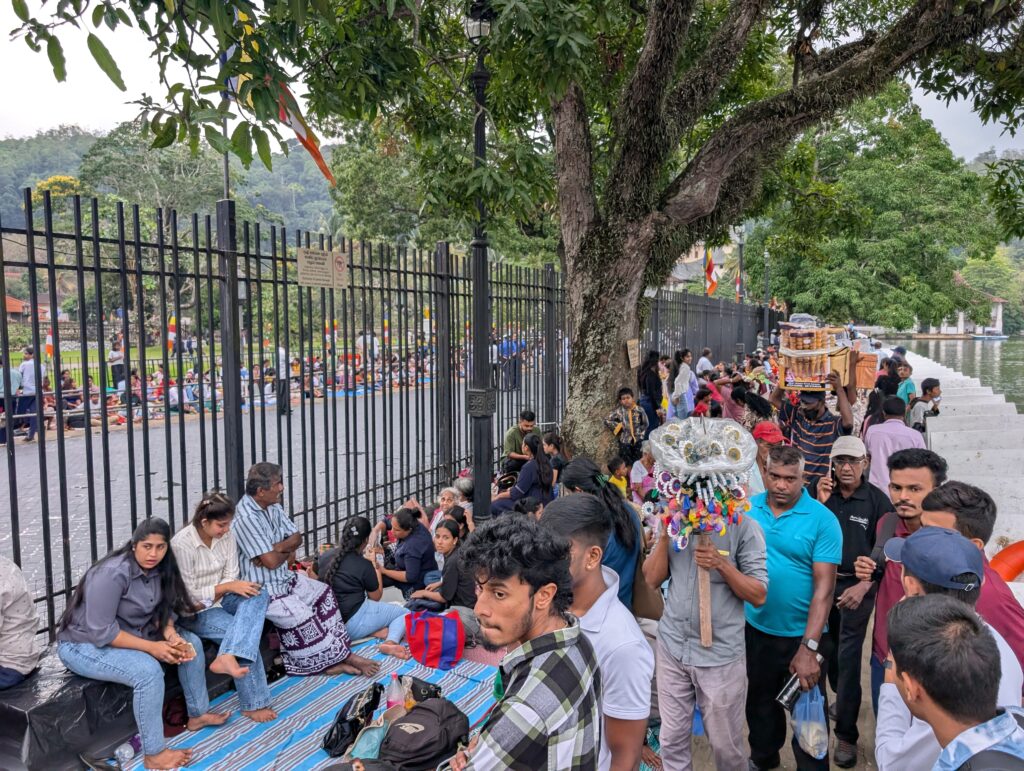

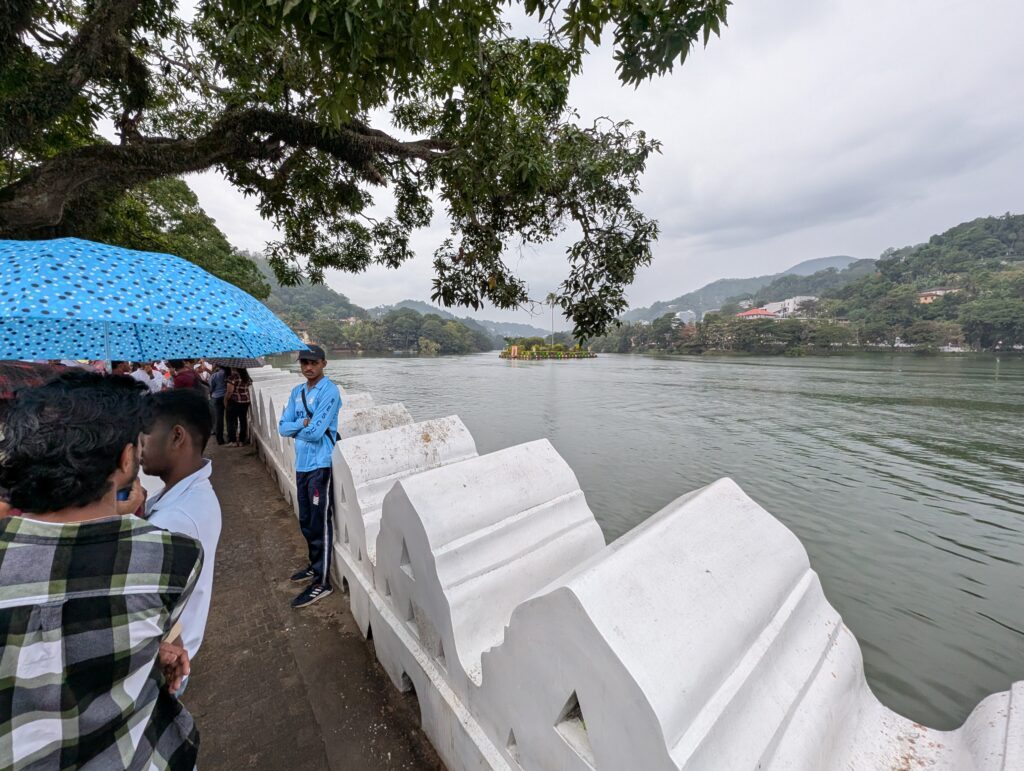


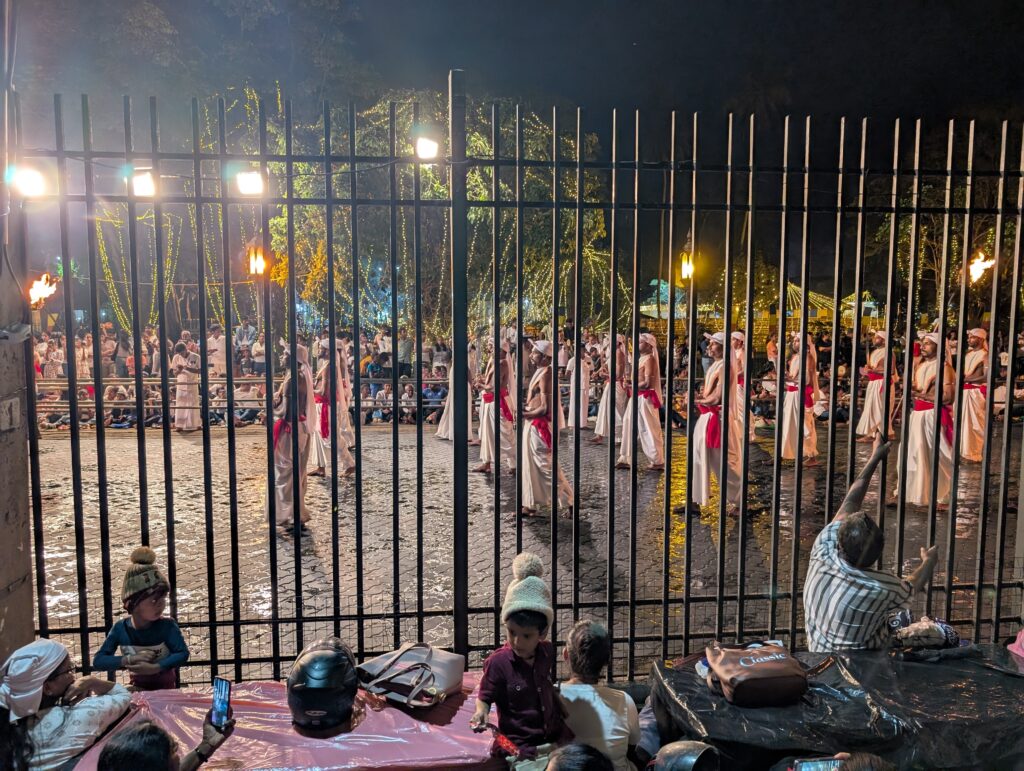
I had read that you must arrive a few hours ahead to secure a place from which to watch one of these processions. I figured it would begin around nightfall, sometime near 7:00 p.m. I strolled along the shore of the lake toward the temple, and arrived on the path of the parade at about 4:00. Crowds of spectators had already lined the narrow walk between the lake and a fence separating the walkway from the parade route. Any place where people could sit was covered with blankets, and already occupied. I was frequently notified that there were grandstands set up for foreigners, where one could sit to observe the event for the special low price of about $100. I figured I would just stand… and stand I did, for a total of about six hours!
A three foot concrete barrier prevented people walking the lake shore from falling into the water. I leaned up against this to relieve the stiffness from standing after a couple of hours. A security officer charged with patrolling the event came by and told me I was not allowed to lean against this wall, but that for only $100, I could have a seat in the foreigners’ grandstand. I demurred and went back to standing. A light rain began to fall. This did not deter the crowds at all. Vendors came along selling tiny shelled peanuts that were pretty hard to eat and fairly bitter. I was hungry, though, and paid eighty or a hundred rupees for a sack (about thirty cents). Other vendors came along selling different items, some of which I could not identify. Some sold toys or amusements for the multitude of tiring children who had joined their parents to observe the spectacle.
The policeman who had urged me away from the fence was trying to keep a narrow area behind the crowd seated on their blankets and the barrier clear for pedestrian traffic. The path was nevertheless quite narrow, and passers by as well as vendors often bumped and jostled me as I stood there for hours awaiting the parade I had come to Kandy particularly to see. The wait was long and uncomfortable. I had guessed incorrectly that I would find a place to get a meal while I waited. The peanuts wore off long before the procession arrived. I always enjoy people watching, though, and that was interesting. As always, I was somewhat of a spectacle to the vertically impaired South Asian spectators. Children stared, but responded joyfully when I interacted with them a bit, or shared a peanut or two. As darkness fell, the lights around the lake made a pretty sight. I bent over and stretched, moving my legs around to keep from stiffening up too badly.
It was a good experience, overall, though. The parade was indeed quite a spectacle, and when it was all said and done, I was glad I had not shelled out $100 just to sit for a few hours. A couple of sentinel fellows led the procession. For some reason that I never completely understood, everyone threw small coins out in front of them as the rest of the parade approached. The coins clanged, and rolled on their flat edges in the street. They were followed by groups of dancers. There were fire dancers, cultural dancers, men doing all sorts of different rhythmic motions as they marched. They came in groups, each coordinated by color and outfit. There were no female dancers until the third hour of the parade. Occasionally interspersed were Buddhist flag bearers. The parade included dozens of elephants. Sometimes the elephants came one at a time, and sometimes in groups of twos and rarely threes. They were all colorfully adorned in jeweled sheets crafted specially to serve as elephant clothing. Most had riders, and some of the elephants even danced. They would rock back and forth to the beat of the constant music, swinging their trunks or raising a leg. Observing carefully, I could see the elephant’s handler subtly directing the dance maneuvers.
(Continued)
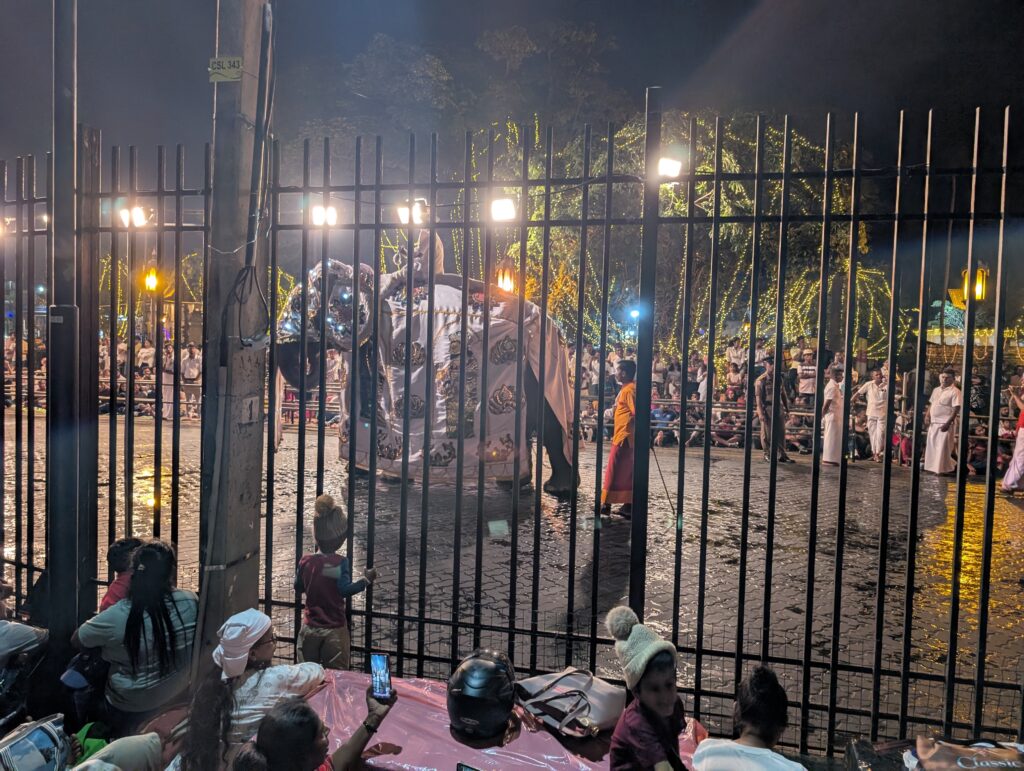
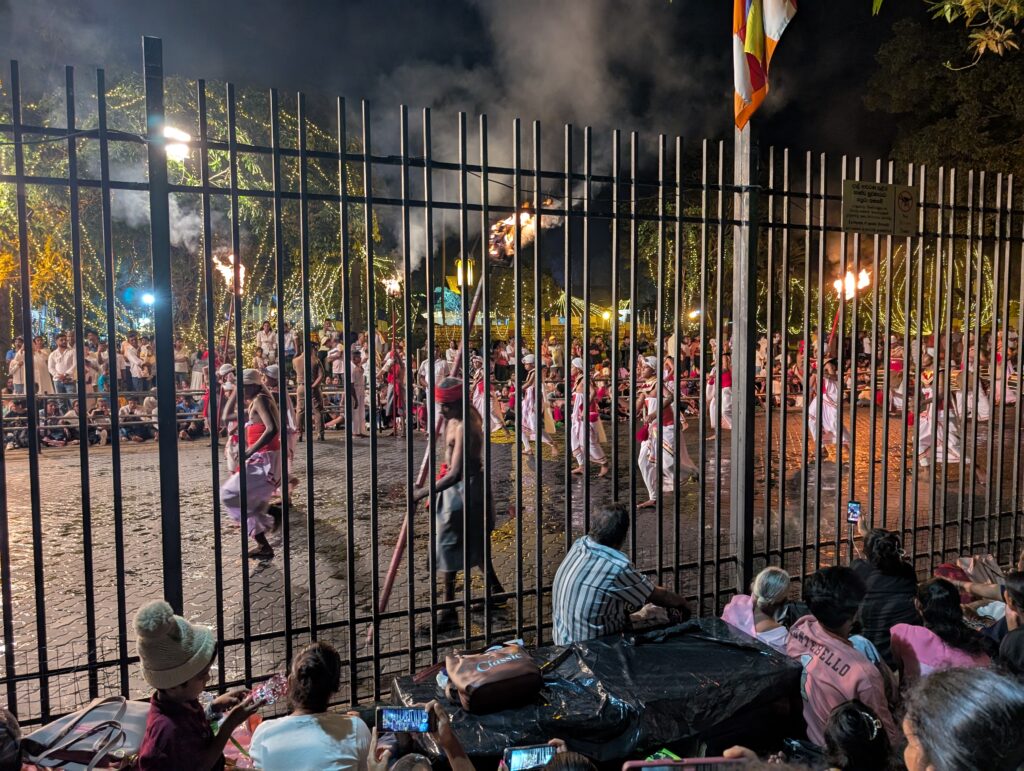
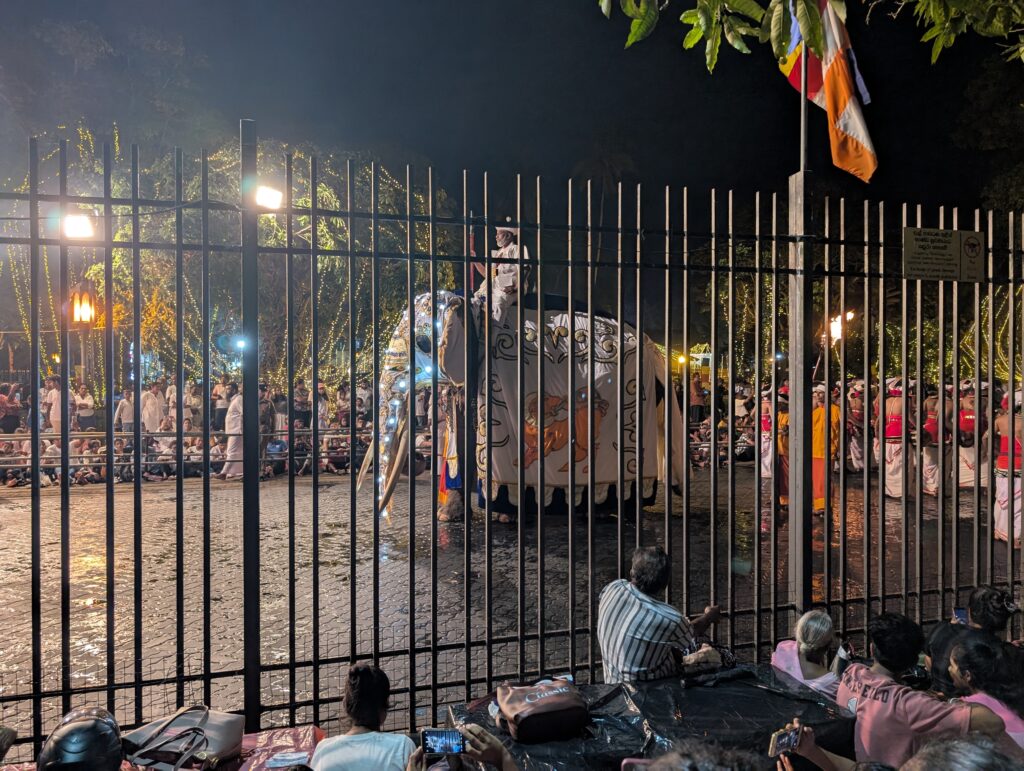

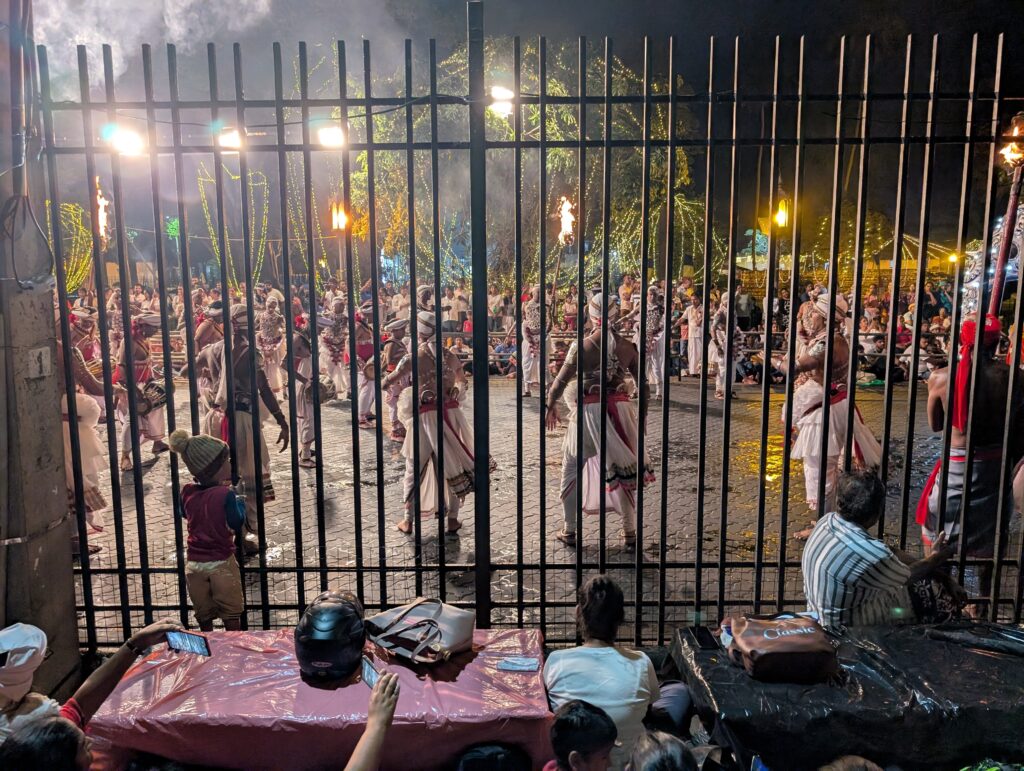
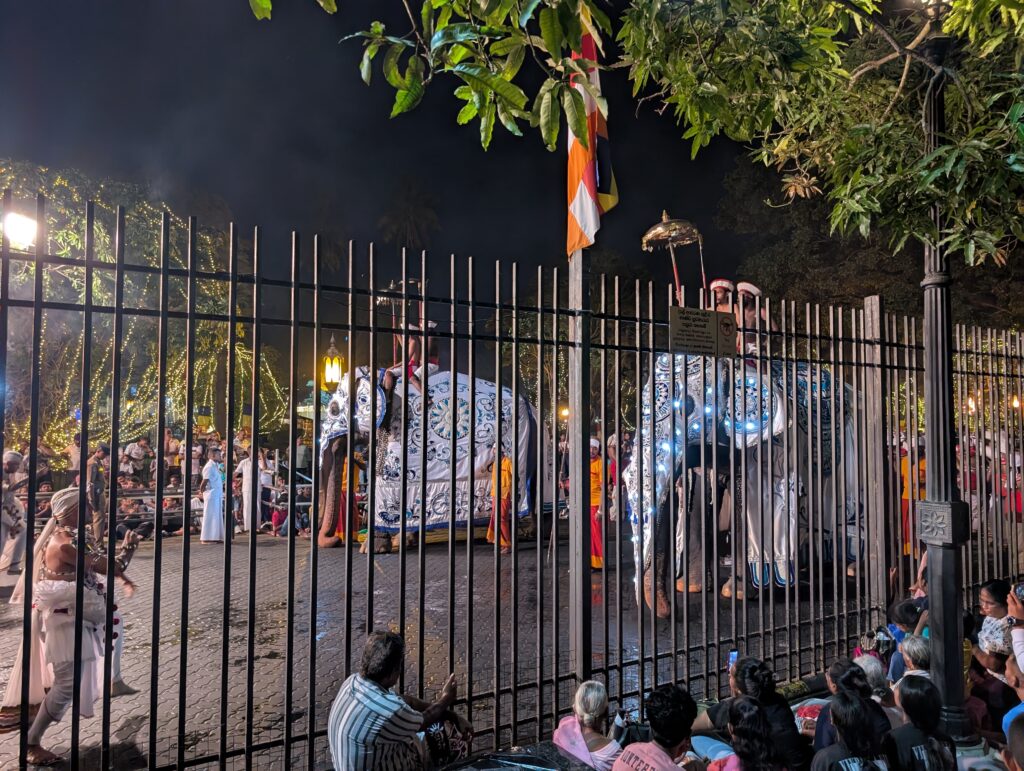


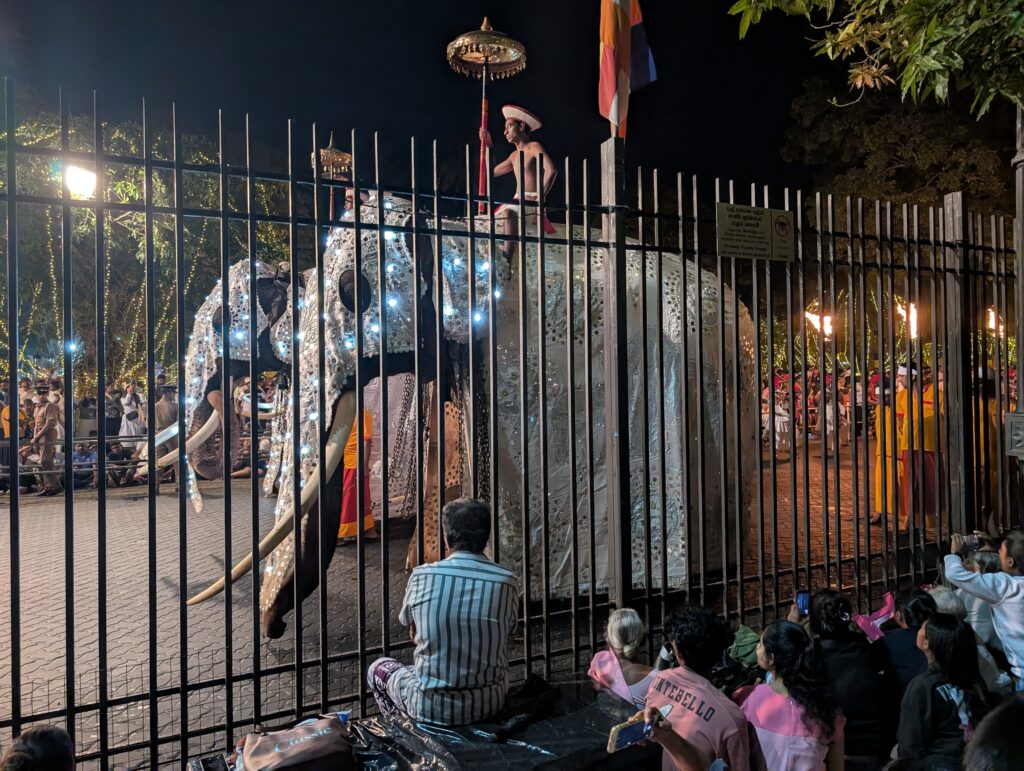

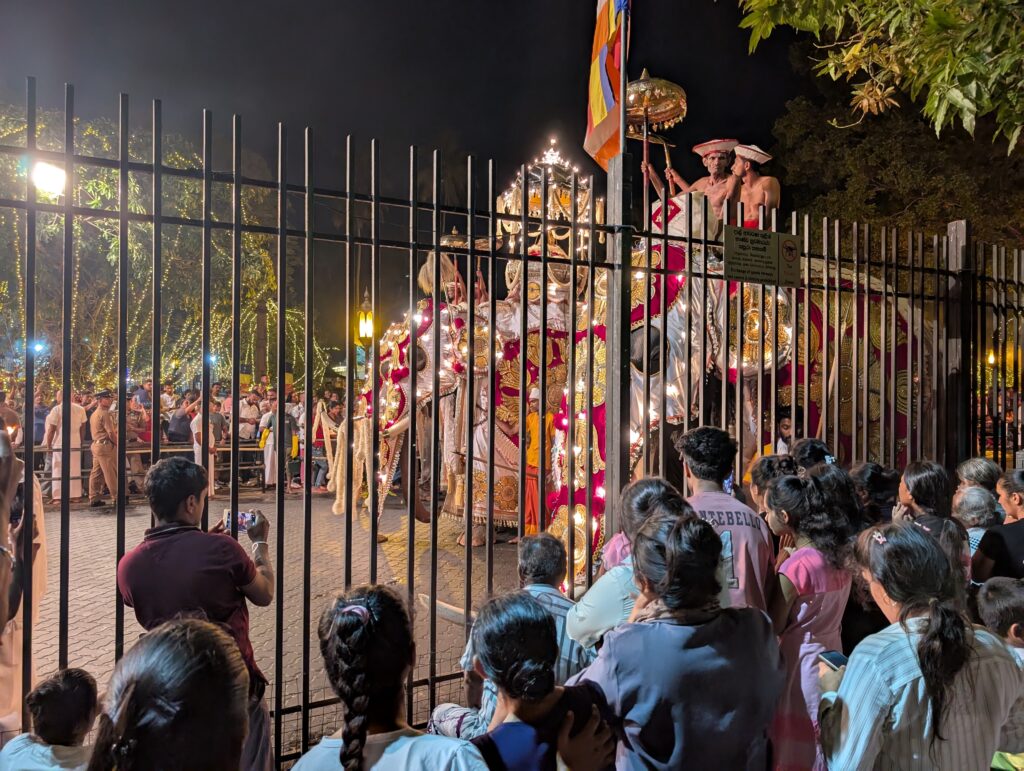

One elephant each in a couple of the groups of elephants that passed in the middle of the procession had a small structure at the peak of his back. The structure was shaped like a small, glitter colored, bedazzled veranda. One of these mounted carriages contained a tiny box supposed to contain the tooth relic itself. As I understand it, they do not risk displaying the actual tooth relic, but rather a replica. From any distance at all, you couldn’t see anything so small as a tooth. You really couldn’t even see the small box containing the replica tooth relic. From observing the folks around me, I gathered that the passing elephant was carrying the tooth relic platform. I’m not sure how anyone would ever know if there was an actual tooth in it.
It wasn’t really a tooth anyone was coming to see, anyway. We watched the fire dancers, the cultural dancers, the flag bearers, the elephants, and of course all of the people who came to participate in the event. I did see a few European, American, or Australian tourists, but not many. When I did see other white tourists, they nearly always were being walked through the area by a guide. None of them stayed to watch more than twenty or thirty minutes. Most just walked down the path. In their defense, the entire procession lasted three hours. I suppose walking past and catching a sampling of the parade would have been adequate for most people, while avoiding the three hour wait and three hour long procession, as well as the $100 grandstand seating charge. Then again, all of those folks had undoubtedly paid these guide just to lead them through the melee. I suppose I just prefer to learn on my own how to navigate such circumstances. There probably would have been some value in having a knowledgeable guide explain aspects of the Festival of the Tooth and the associated procession.
All in all, I found it to be a very interesting stop. Experiencing something this different and unique was well worth the chaotic drive, the long wait, and the many hours of standing. I can see why many people just walk past, or shell out the money to sit in the grandstands. Again, those are budgeting considerations. Paying exorbitant prices for a seat at such an event is one example of ways that Sri Lanka is made relatively expensive, when it could be a dirt cheap place to visit. I think for most tourists, paying for drivers, special seating, and elevated foreign admissions are just part of the cost of travel. As someone trying to stretch my travel over months rather than days, I tend to try to avoid some of those costs, particularly when they seem unnecessary. I then sometimes pay the cost in lack of comfort. I am OK with that. I saw Kandy and the Festival of the Tooth on my terms, and while it was not as ideal or comfortable as I would have liked, I was glad I made the stop and saw the procession.
When the last of the parade had passed, the crowd began to disperse. As is nearly always the case in Asia, there were hoards of people moving in masses. Like running water, the crowed flowed around the end of the tall gate, then careened over and through the smaller barriers built to keep spectators out of the street. I was famished. I joined the flow until I was able to walk down the main commercial street and into a still-open eatery. I wiggled my way in and sat down to order. The crowd dispersed as I ate my 10:00 p.m. supper. I enjoyed my meal before walking back up to the hostel where I had my shower and slept well. I needed to get an early start the next morning in order to make a roughly four hour drive to the only church I knew of on the South side of Colombo.
